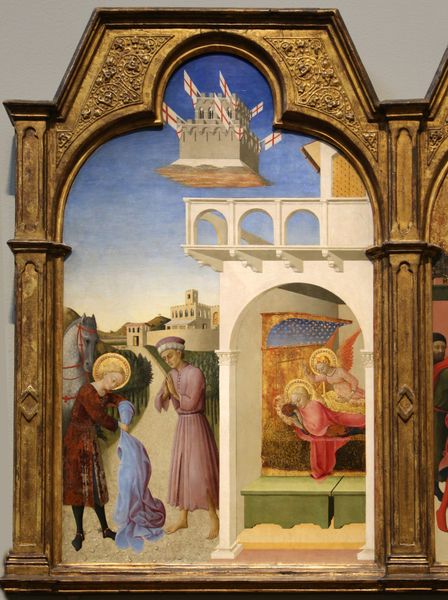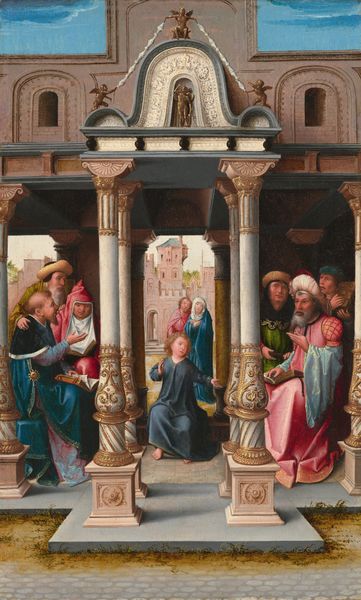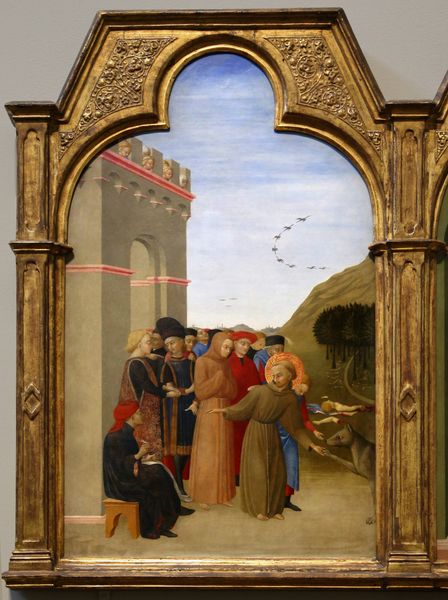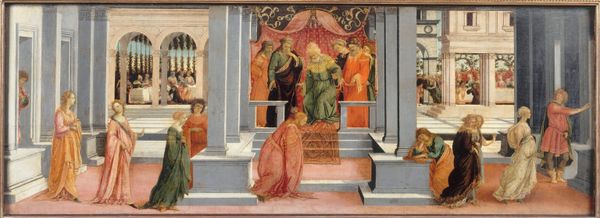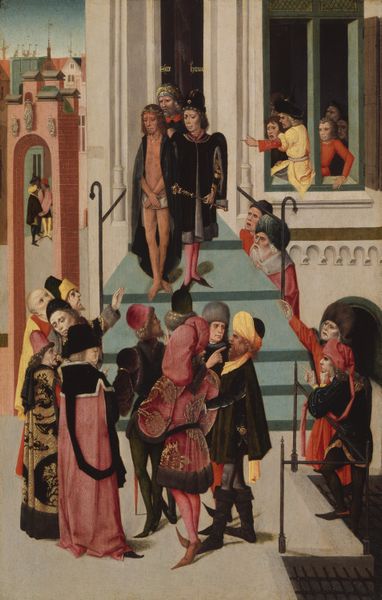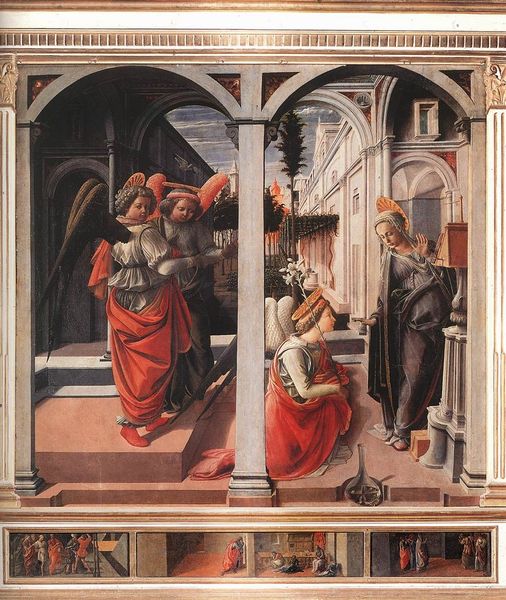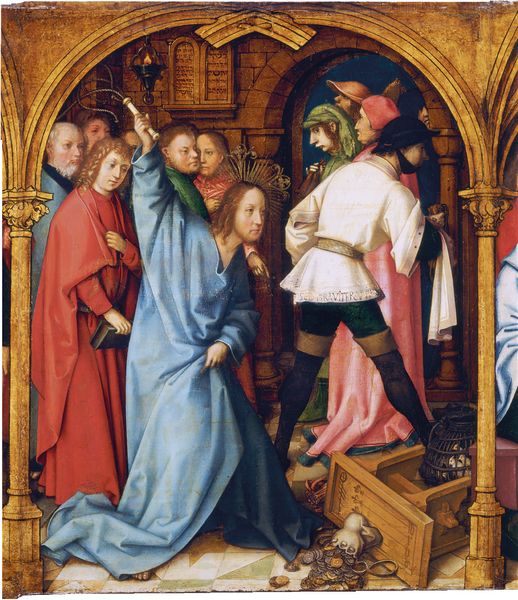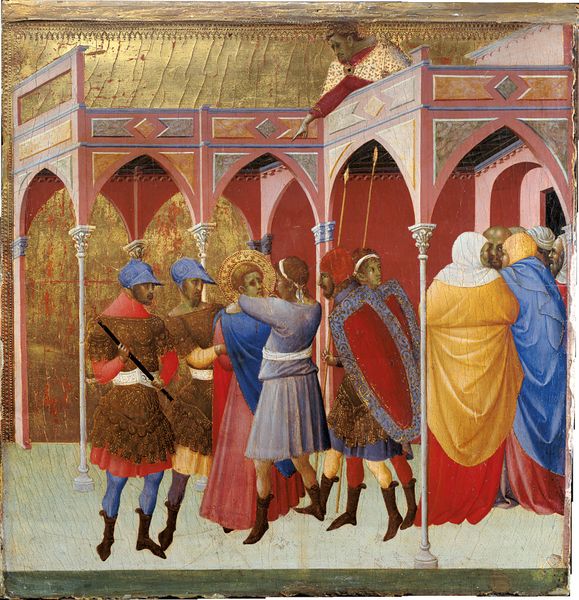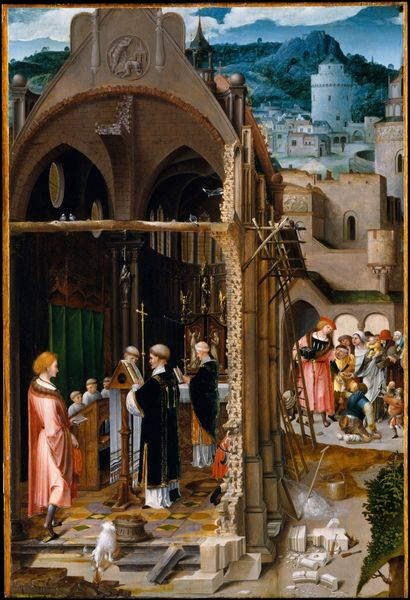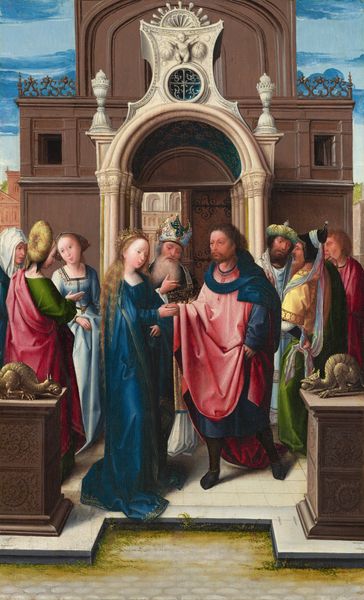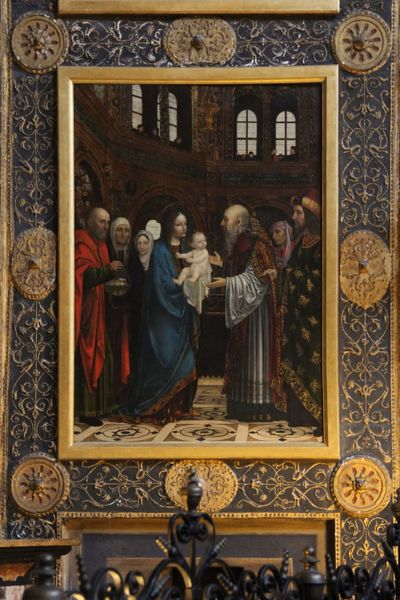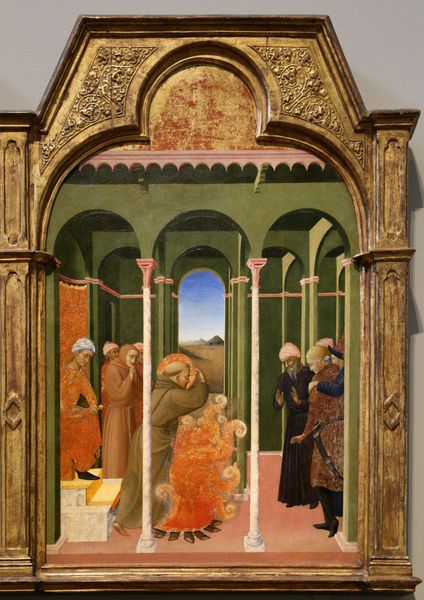
tempera, painting
#
narrative-art
#
tempera
#
painting
#
figuration
#
historic architecture
#
traditional architecture
#
history-painting
#
italian-renaissance
#
early-renaissance
#
watercolor
#
historical building
Copyright: Public domain
Curator: Here we have a detail from Stefano di Giovanni's, known as Il Sassetta, "Polittico di Sansepolcro," created around 1444. It's a tempera painting, rich with narrative. Editor: The formality of this scene is striking. A hushed intensity radiates from the architecture and figures, even from this fragment of a larger work. The enclosed space has an air of deliberation. Curator: Indeed. Sassetta was working in Siena during a period of immense social and political tension. It's essential to remember Siena's unique position within the Italian Renaissance—its fierce independence and its conservative artistic traditions, intentionally distinct from Florentine developments. Editor: Those scarlet hats that every figure on the left wears seem to symbolize both secular power and potentially also an underlying tension; like simmering embers. How did this piece function within Sienese society? Curator: Sassetta aimed this piece at a rising merchant class eager to position itself strategically within that conservative socio-political world. Its inherent visual vocabulary had to function in a way that these rising players and powerbrokers understood and affirmed. It represents power negotiating with and navigating tradition, especially within these rising social tiers. Editor: Power is definitely felt in these visual cues, certainly, but then why choose this medium? I feel that his strategic implementation of color and architectural space might also carry deeper symbolism. Perhaps an assertion of control using this sacred space? Curator: Certainly! Sassetta is very self-aware, utilizing certain spaces in ways that make visible these emerging socio-economic arrangements, especially as they related to deeply enshrined, but nevertheless changing gender dynamics of 15th century life. I’m glad we took a moment to reflect on this compelling piece from that era! Editor: Absolutely. These silent dialogues are always a chance to learn new iconographic tools!
Comments
No comments
Be the first to comment and join the conversation on the ultimate creative platform.
